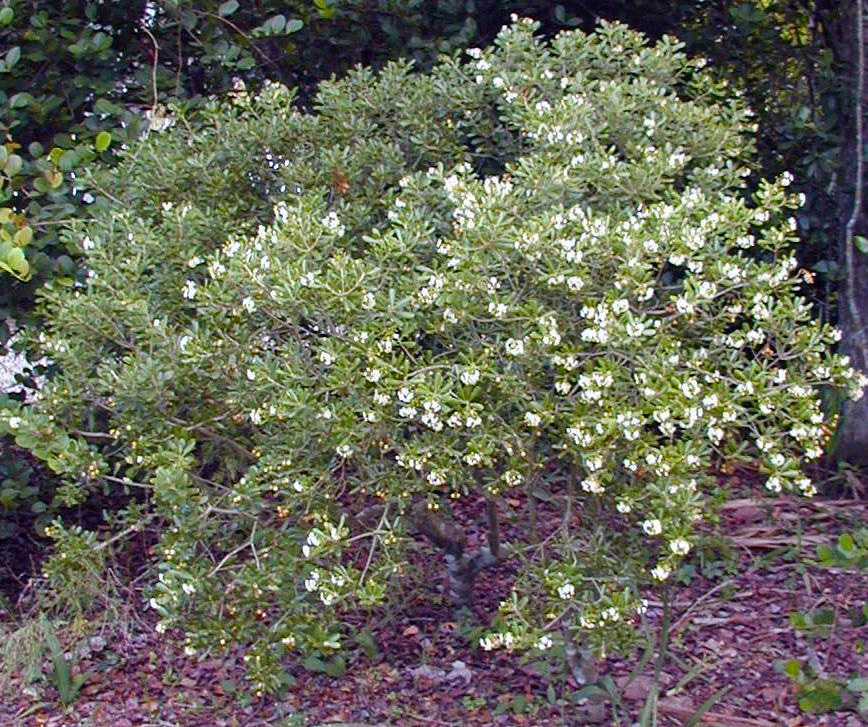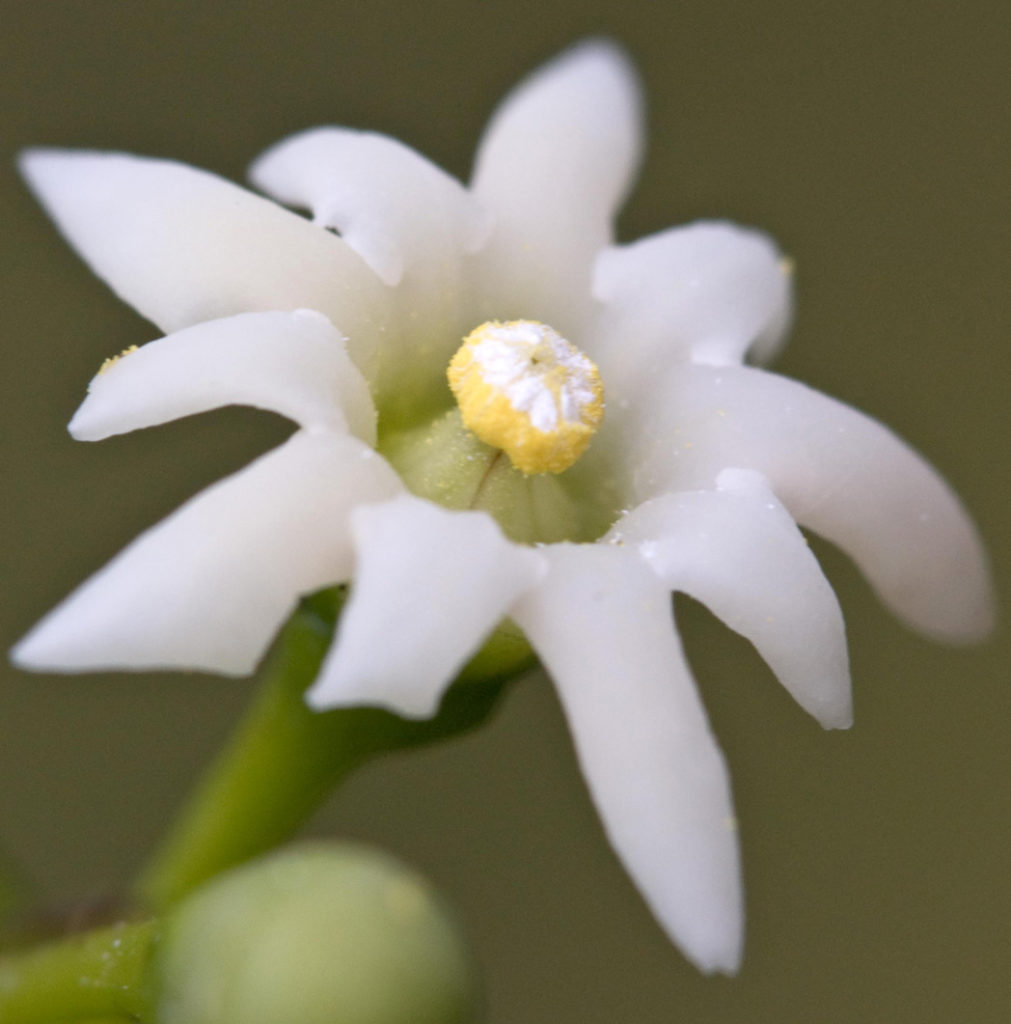Joewood
Pictured above: Joewood (Jacquinia keyensis) taken at the National Key Deer Refuge in the Florida Keys. Photo by Alan Cressler, Lady Bird Johnson Wildflower Center. Click on terms for botanical definitions. View post as a PDF
Joewood is an evergreen shrub found in coastal hammocks, strands and scrub in South Florida. It blooms year-round, peaking in summer and fall. The fragrant flowers are rich in nectar and attract a variety of pollinators, especially bees. Birds and other small wildlife savor the fruit and find cover in the plant’s dense foliage. Although common in its natural habitat, Joewood is a state-listed threatened species.
Joewood’s small but profuse flowers are white to ivory and funnel-shaped with five broadly spreading petals alternating between five smaller petal-like staminodes. The ovary is green and noticeable in the center of the flower. It is surrounded by greenish-white stamens topped with pale to bright yellow anthers. The flowers are born in terminal racemes. Leaves are simple, leathery and petiolate. They vary in shape from elliptic to obovate and have slightly rounded, notched apices. Margins may be entire or revolute. Leaf arrangement is alternate but begins to spiral near the tips of the branches and is often mistaken as whorled. The plant may have one or several short, stout trunks. Each trunk produces many branches, resulting in a dense, rounded crown. Bark is smooth and light gray but may become mottled with lichens as the shrub ages. Berries are white to greenish-yellow and turn reddish-orange as they mature (with the exception of the Sanibel Island population, which is known to yield ivory berries). Seeds are small, brown and held in a sticky pulp within the berry.

Joewood shrub’s rounded crown and profuse blooms add interest to a landscape. Photo by Jenny Evans (CC BY-NC 2.0)
The genus name Jacquinia honors the Dutch botanist Nikolaus Joseph von Jacquin (1727–1817). Some sources recognize the assimilation of the Theophrastaceae family into the Primulaceae (Primrose) family.
Family: Theophrastaceae (Joewood)
Native range: Charlotte, Lee, Miami-Dade and mainland Monroe counties and the Keys
To see where natural populations of Joewood have been vouchered, visit florida.plantatlas.usf.edu.
Hardiness: Zones 10A–11
Lifespan: Perennial
Soil: Moist, well-drained sandy or calcareous soils
Exposure: Full sun to partial shade
Growth habit: 4–10’+ tall, crown about as wide or wider
Propagation: Seed (seeds do not store; remove from fruit and plant immediately)
Garden tips: Joewood’s attractive form and semi-showy flowers and fruit make it an excellent specimen or accent shrub for coastal landscapes. It is slow-growing, long-lived and tolerates salt, hurricane winds and short periods of drought and brackish water inundation. It does well in partial shade, but planting in full sun will encourage a fully rounded crown. The seeds may be toxic to humans so do not plant where children frequent.
Plants are occasionally available from nurseries that specialize in Florida native plants. Visit www.PlantRealFlorida.org to find a nursery in your area.

